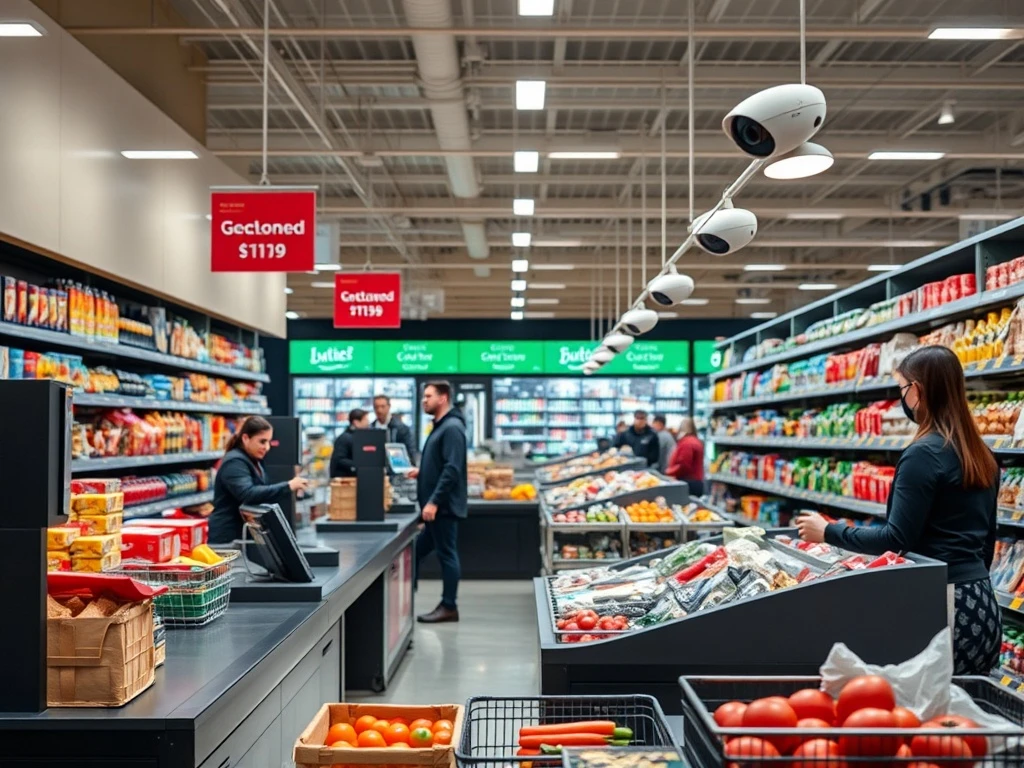The retail industry constantly battles a pervasive problem: theft. Shoplifting costs businesses billions annually. This issue directly impacts profits and ultimately affects consumer prices. Consequently, supermarkets, including major players like Aldi, seek effective solutions. Now, a prominent supermarket rival is pioneering a bold new approach to enhance shoplifting prevention. This strategy aims to significantly reduce losses and create a more secure shopping environment. It represents a shift from traditional security measures, focusing on technology and proactive deterrence. This development could reshape how retailers approach security challenges.
The Rising Challenge of Shoplifting Prevention
Retail theft remains a significant concern for businesses worldwide. According to industry reports, losses from organized retail crime and casual shoplifting have escalated. These thefts do not just affect large corporations. They also impact smaller businesses and local communities. For instance, the National Retail Federation reported that retail shrink, a term encompassing theft, fraud, and errors, cost the industry tens of billions of dollars. This figure highlights the urgent need for robust shoplifting prevention strategies.
Supermarkets face unique challenges. They manage high volumes of transactions and a wide array of products. This environment makes them particularly vulnerable to various forms of theft. Items like alcohol, razor blades, and certain electronics are often targeted. Moreover, self-checkout systems, while convenient, have also presented new avenues for dishonest behavior. Retailers must adapt their security protocols constantly. They need innovative solutions to stay ahead of increasingly sophisticated theft methods. Therefore, investing in advanced loss prevention tools becomes critical for sustained profitability.
Understanding the Scope of Retail Theft
Retail theft encompasses several categories. These include:
- Shoplifting: Customers taking merchandise without paying.
- Employee Theft: Staff members stealing goods or cash.
- Organized Retail Crime (ORC): Professional theft rings stealing large quantities of goods for resale.
- Administrative Error: Mistakes in pricing or inventory.
Each type contributes to overall shrink. However, shoplifting often receives the most public attention. Its visible nature directly impacts the shopping experience. Consequently, businesses seek methods that deter theft without alienating legitimate customers. Effective shoplifting prevention requires a multi-faceted approach. It combines technology, store design, and staff training. The goal is always to protect assets while maintaining a welcoming atmosphere.
A New Era in Retail Security for Shoplifting Prevention
Aldi’s rival has introduced a novel system. This system leverages cutting-edge technology to combat theft. The approach focuses on proactive identification and deterrence. Instead of relying solely on reactive measures, this new strategy aims to prevent theft before it occurs. It integrates artificial intelligence (AI) with advanced sensor technology. This combination creates a sophisticated monitoring network throughout the store.
Specifically, the rival supermarket is piloting a system called ‘Sentinel Scan.’ This system employs AI-powered cameras positioned strategically. These cameras monitor customer behavior in real-time. They analyze movements and patterns that might indicate suspicious activity. For example, if a customer places an item in a bag without scanning it at a self-checkout, the system flags it instantly. Furthermore, it identifies instances of ‘banana tricking,’ where cheaper produce codes are used for more expensive items. This innovative use of AI promises a new level of shoplifting prevention.
How ‘Sentinel Scan’ Enhances Security
The ‘Sentinel Scan’ system operates on several principles:
- Real-time Behavioral Analysis: AI algorithms continuously process video feeds. They identify unusual movements or interactions with merchandise.
- Instant Alerts: When suspicious activity is detected, an alert is sent immediately to store staff or security personnel. This allows for prompt intervention.
- Data-Driven Insights: The system collects data on theft patterns. This information helps stores optimize layouts and security placements.
- Non-Intrusive Monitoring: The technology is designed to be discreet. It avoids creating an overly surveilled atmosphere for honest shoppers.
This comprehensive approach significantly boosts the effectiveness of shoplifting prevention efforts. It moves beyond simple surveillance. Instead, it offers predictive capabilities and actionable intelligence. The system learns and adapts over time, becoming more efficient. This represents a substantial leap forward in retail security.
The Impact on Consumers and Business Operations for Shoplifting Prevention
Implementing such advanced systems carries implications for both consumers and business operations. For consumers, the primary benefit is potentially lower prices. Reduced theft means less financial loss for the retailer. Consequently, these savings can be passed on to shoppers. Moreover, a safer shopping environment benefits everyone. Customers can feel more secure knowing that the store actively combats crime. However, privacy concerns may arise. Retailers must ensure transparency regarding data collection and usage. Clear communication builds trust with the customer base.
For businesses, the operational benefits are substantial. Firstly, a decrease in shrink directly improves profit margins. Secondly, staff can reallocate time previously spent on loss prevention tasks. They can instead focus on customer service or merchandising. Thirdly, the data gathered by these systems provides valuable insights. Stores can identify high-risk areas or products. This allows for more targeted security measures. Ultimately, this leads to more efficient resource allocation. The investment in advanced shoplifting prevention technology pays dividends through improved efficiency and profitability.
Navigating the Future of Retail Theft and Shoplifting Prevention
The battle against retail theft is ongoing. As technology advances, so do the methods employed by thieves. Therefore, retailers must continuously innovate. Systems like ‘Sentinel Scan’ represent a proactive step. They show a commitment to leveraging technology for security. Other emerging technologies include biometric payment systems and smart shelving. These innovations promise even greater control over inventory and transactions. The goal remains consistent: to minimize losses while maximizing customer satisfaction. Effective shoplifting prevention will always be a dynamic field, requiring constant vigilance and adaptation.
In conclusion, the new strategy adopted by Aldi’s rival marks a significant milestone. It highlights the retail sector’s evolving response to theft. By embracing AI and advanced monitoring, supermarkets can protect their assets more effectively. This benefits businesses through improved profitability. It also benefits consumers through potentially lower prices and safer shopping experiences. As retail environments continue to evolve, so too will the methods for ensuring their security. This proactive stance on shoplifting prevention sets a new benchmark for the industry.
***
Frequently Asked Questions (FAQs)
What is the primary goal of the new shoplifting prevention strategy?
The primary goal is to significantly reduce retail theft and shrink. It aims to achieve this by using proactive, technology-driven methods, specifically AI-powered monitoring, to deter and detect suspicious activities in real-time before losses occur.
How does AI help in shoplifting prevention?
AI assists by analyzing real-time video feeds and behavioral patterns. It identifies unusual movements or actions that might indicate theft. This allows store staff to intervene quickly. It also learns from data to improve its detection capabilities over time.
Will this new technology affect customer privacy?
Retailers implementing such technology must balance security with customer privacy. The systems are typically designed to monitor behavior rather than identify individuals personally. Transparency about data collection practices is crucial to maintain customer trust.
Are self-checkouts contributing to increased shoplifting?
While self-checkouts offer convenience, some studies suggest they may create opportunities for certain types of theft, such as unscanned items or mis-scans. New technologies like ‘Sentinel Scan’ specifically aim to mitigate these risks at self-checkout stations.
What are the benefits for consumers from improved shoplifting prevention?
Consumers may benefit from potentially lower prices due to reduced financial losses for retailers. Additionally, a more secure shopping environment can enhance the overall customer experience, making stores feel safer and more reliable.
Is this technology likely to become standard in other supermarkets?
Given the significant financial impact of retail theft, it is highly probable that similar advanced shoplifting prevention technologies will become more common across the supermarket and broader retail sectors. Early adopters often set new industry benchmarks.








